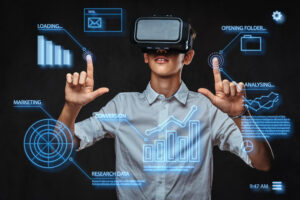As we progress into the digital era, the significance of “digital twins” is steadily increasing across various sectors such as manufacturing, urban planning, and healthcare. A “digital twin” is an exact virtual replica of a physical object capable of mimicking future events and gathering real-time data on its physical counterpart. With the potential to enhance performance, facilitate predictive maintenance, and aid in decision-making, digital twins are expected to undergo significant developments by 2024 and beyond, reshaping multiple industries and fostering new avenues for creativity. Key trends driving this evolution include:
- Integration with IoT and AI: The growing integration of digital twins with Artificial Intelligence (AI) and the Internet of Things (IoT) is a pivotal theme in their advancement. This integration not only enhances the realism of simulations but also enables real-time applications to make more autonomous decisions by forecasting results based on received data.
- Enhanced Realism through Advanced Visualization: Advancements in visualization technologies such as Virtual Reality (VR) and Augmented Reality (AR) are making digital twins more accessible and user-friendly. By 2024, closer integration between these visual technologies and digital twins will provide users with immersive experiences, particularly benefiting industries like architecture and urban planning.
- Scalability and Adoption across Sectors: Digital twins are becoming more scalable, making them accessible to smaller businesses and a wider range of industries. From retail to agriculture, digital twins are finding creative applications, aiding in tasks such as crop yield modeling and supply chain optimization.
- Standardization and Interoperability: Standardization and improved interoperability across platforms and systems are becoming increasingly important as digital twin technology spreads. Universal standards will facilitate seamless interaction between digital twins, accelerating their adoption while reducing deployment costs and complexity.
- Cybersecurity Enhancements: As digital twins become essential to critical infrastructure systems, cybersecurity becomes a crucial concern. By 2024, cybersecurity measures for digital twins will have strengthened, utilizing real-time anomaly detection systems and cutting-edge encryption techniques to safeguard confidential information.
- Sustainable Development and Digital Twins: A new trend emerging is the application of digital twins to support sustainable development. By modeling various scenarios, digital twins can aid in the construction of more environmentally friendly and productive structures, energy systems, and transportation networks.
- Proactive Maintenance and Lifecycle Management: Digital twins are driving the shift from reactive to proactive
 and predictive approaches in maintenance tactics. By continuously monitoring the condition of their physical counterparts, digital twins anticipate when maintenance is necessary, preventing unplanned equipment breakdowns and extending the asset’s lifespan.
and predictive approaches in maintenance tactics. By continuously monitoring the condition of their physical counterparts, digital twins anticipate when maintenance is necessary, preventing unplanned equipment breakdowns and extending the asset’s lifespan.
In conclusion, the development of digital twin technology is set to fundamentally alter how we engage with and oversee physical assets across all sectors of society. By leveraging IoT, AI, and advanced visualization technologies, as well as improving scalability, standardization, cybersecurity, and sustainability, digital twins will continue to provide essential insights and efficiency. With virtually limitless potential, digital twins have the capacity to drive innovation, improve operational efficiency, and promote more sustainable development practices worldwide as we move into 2024 and beyond.






